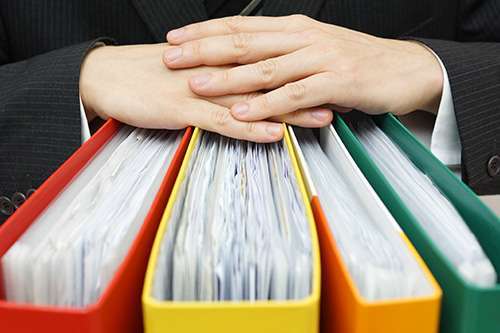-
Your Vendors Should Email Invoices-Here’s Why
Despite our technological progress over the last ten years, businesses are still riddled with paper requirements. The IRS requires hard copy documents to be maintained for at least seven years. Some state laws mandate businesses keep hard copies for everything from insurance to energy to payroll.

Fortunately, there are quite literally tons of pages you can save yourself every year by making internal adjustments. You can start by taking your accounts payable workflow into the digital age with emailed invoices.
-Time, Effort, & Energy: Receiving paper and processing mail is a pain. You may have a whole department dedicated to opening, sorting, and distributing mail. Paper invoices received this way are hard to track and easy to lose. It’s not surprising that each lost document costs an average of $122 to locate and 7.5% are simply never found, especially if you operate in a high volume or fast-paced industry. Converting even half of your vendors to emailed invoice submission will have an immediate benefit to your business and your AP team.
-Everyone Saves: Processing invoices faster can help you get discounts and manage your cash flow—easy ways for you to save money. But, emailing invoices actually saves vendors money too. At $0.49 per letter and climbing, postage isn’t a negligible expense when you’re mailing thousands of invoices annually. When you combine paper products, postage, and people stuffing and mailing, it can cost anywhere from $1-4 to send an invoice. Compared with an electronic method, those costs drop to $0.50 per invoice (even less with an automated system).
-Quicker Turnaround: Everyone loves to get paid and with electronic invoices, vendors have the opportunity that much sooner. Instead of waiting 4 or 5 days for an invoice to arrive in the mail, the digital version can pop up in your inbox in seconds. Using a generic email address and automating your document intake will smooth your workflow even more and give you better insight into upcoming payments.
-Easier Management: Invoices come in all shapes and sizes with staples, paperclips, and junk mail often enclosed. They can be very small or take up entire reams of paper—front and back! Filing cabinets may be manageable in the short term but as your business grows, you need a better system for tracking what comes in and needs to be paid. You don’t want to find your storage costs and late fees going through the roof when sales do. Switching to electronic methods early on can give you a solid foundation for growth.
Companies share problems with paper invoices but fortunately, they also share a solution. Keeping up with changing technology is an integral part of staying competitive. It’s important to stay ahead and not get bogged down in older methods. Transforming the way your company handles invoices and shares payment information is a huge positive without a downside—vendors get paid, goodwill in relationships is maintained, and everyone breathes a little easier knowing this piece of your operations is well in hand.